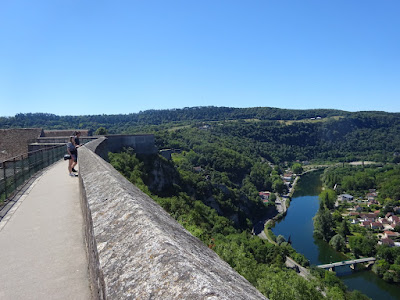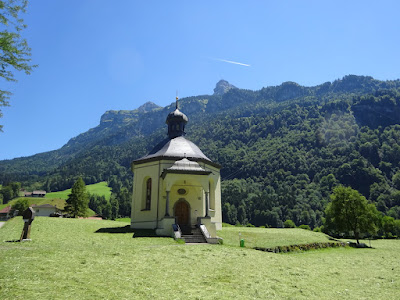Belfort, with 47,000 residents, has a compact downtown. The building on the left is city hall and the ornate building on the right is a French government building.
The beautiful red sandstone Belfort Cathedral, built between 1727-1750, has been a national monument since 1930.
Looking up behind the main square (made to look like a beach--with sand) you can see the citadel (fortress) up on the hill.
During the Franco-Prussian War the French withstood a siege of the city in 1870. To commemorate the event The Lion of Belfort was commissioned.
Finished by Frederic Bartholdi in 1870 and made entirely of red sandstone, it's massive! Standing 36 feet high and 72 feet in length. Shortly after its completion, sculptor Frederic Bathholdi started on his most famous work: the Statue of Liberty
Fortifications still stand in the city center.
Vauban, the famous military engineer, was responsible for building Belfort's fortifications and citadel in 1687. As usual with Vauban there are layers upon layers of ramparts and moats.
Many of the villages I cycle through have colorful flower displays to greet visitors.
















































